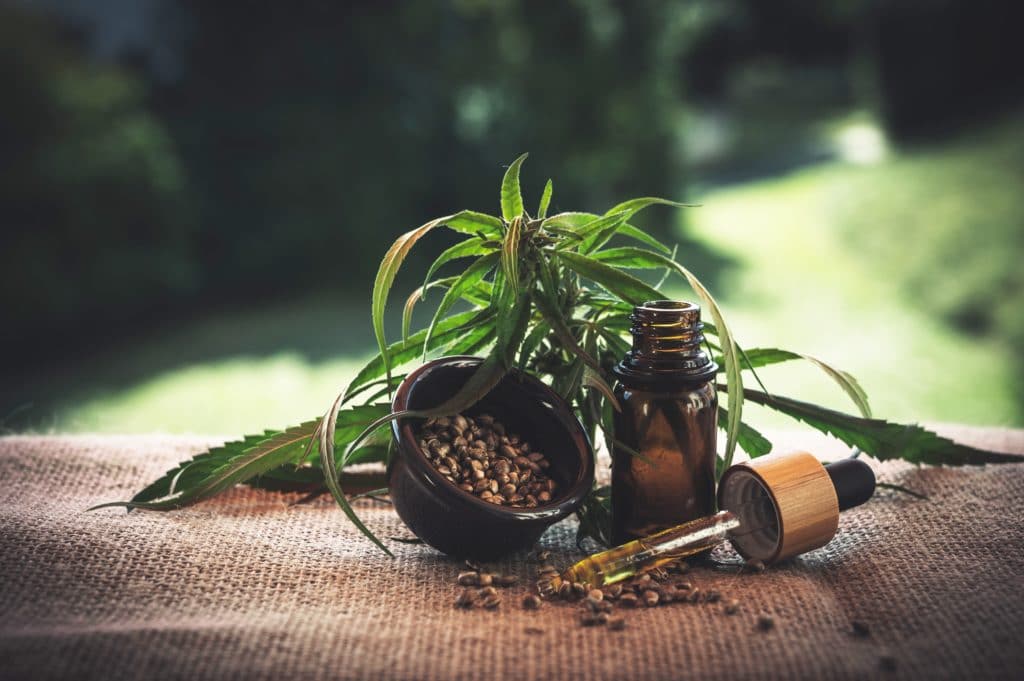Laurie was raised in a small, Midwestern town full of churches and farm supply stores. Her parents were deeply conservative, didn’t travel much, and pretty much congregated within their circle of close friends and neighbors. When the subject of marijuana came up, the standard myths prevailed. It was a gateway drug. Pot was unhealthy, caused brain damage, and only degenerates smoked it. Marijuana had no useful place in society and “Just Say No” promoted by Nancy Reagan was taken as gospel. A pervasive, racially-tinged myth was whispered as well; marijuana was for minorities and not something upstanding white people should ever use.Laurie, now in her mid-40s and living in California, is a breast cancer survivor. She’d been introduced to medical marijuana for adults by her support group to ease the side effects of chemotherapy and radiation. Thankfully, she is in remission and marvels at how medical marijuana helped get her through the cancer treatments. She wanted to share this hidden part of her treatment with her parents and made the decision to talk with them during her upcoming trip home. Her plan was to present facts about her own condition and provide information about the history of cannabis in America. So, she dug into it.
The Roots of Cannabis Prohibition
Through her support group Laurie knew that cannabis had been used medicinally for thousands of years by cultures throughout the world. In doing her online research she learned that in colonial times through the early 20th century, hemp was commonly used in America for building materials, ropes, clothing, and sails. Spaniards also introduced cannabis to its Central and South American colonies for hemp cultivation. Over time, their colonist workers began using “marihuana” for its medicinal and elative affects. In the mid-19th century, Cannabis Sativa also made its way into ports from sailors and immigrants coming into the U.S. from India, the Caribbean, and Central and South America. It was not viewed as a public concern let alone a plant worthy of a criminal offense. Drug stores at the time sold opium, cocaine and cannabis in various forms as over the counter medicines. This laissez-faire attitude began to change with the Mexican Revolution from 1910 – 1920.
Fleeing the Revolution and the lasting upheaval it caused, Mexicans began immigrating in greater numbers to the United States. They brought cannabis with them moving it into the Southwest. This caused alarm among established society and it wasn’t long until law enforcement began blaming immigrants for crimes caused by this “devil weed or loco weed.” Other migration patterns led north up the Mississippi river beyond the port city of New Orleans. Laurie learned that prior to these events, the news media and medical journals generally referred to the plant as cannabis or hemp. She read about police reports from Texas in 1910 that claimed “marijuana” caused violent crimes and gave users superhuman strength. She thought to herself that superhuman strength would have been nice following her treatment sessions. Disparaging, outright racist news accounts became more frequent, including newspapers owned by William Randolph Hearst. As a newspaper man, Hearst viewed hemp-based paper as a threat to his control of wood pulp paper operations. He also lost vast sums of money as a result of the Mexican Revolution. Stories about minorities using “marihuana and marijuana” began to shape the negative narrative about cannabis. From 1914 through 1925, twenty six states passed laws prohibiting marijuana.
Federal Marijuana Prohibition Begins
Like most Americans, Laurie really never knew the history of marijuana prohibition. It began with Harry J. Anslinger who needed job security. It was 1930 and he was appointed Director of a new division of the Treasury Department, the Federal Bureau of Narcotics. Anslinger was previously on the front lines of alcohol prohibition enforcement and knew that enforcing laws against opium and cocaine might not last long given the fairly limited numbers of (immigrant) users at the time. Laurie read on AZ Quotes that Anslinger declared (among other salacious statements) “There are 100,000 total marijuana smokers in the U.S., and most are Negroes, Hispanics, Filipinos and entertainers. Their Satanic music, jazz and swing, result from marijuana usage. This marijuana causes white women to seek sexual relations with Negroes, entertainers and any others.” A jazz fan he was not. Aligned with Mr. Hearst, the nascent pharmaceutical industry and like-minded politicians, Congress passed the Marijuana Tax Act of 1937 which banned the importation, cultivation, possession and distribution of marijuana. In reality, it also stopped hemp cultivation due to outright confusion and the expenses incurred by the new tax. Hemp disappeared from widespread cultivation in the U.S. until the government needed it for raw materials during World War II.
Laurie read that media companies, states, and the federal government engaged in outright propaganda about cannabis. Films like Reefer Madness (made in 1936) told the tale of teenagers driven to criminality, addiction and madness after smoking marijuana obtained from “pushers.” Over the ensuing decades this overall message was actively promoted culminating in May 1971 when cannabis was named as a Schedule I drug under the federal Controlled Substances Act. As such, cannabis has “no currently accepted medical use and has a high potential for abuse.” She was horrified to learn that the government included cannabis as a Schedule I drug in the same class as heroin and cocaine with potentially severe psychological or physical dependence. Based on her personal and support group experience, this was simply absurd. Until now, Laurie was unaware that the CSA launched the War on Drugs with devastating, long term consequences for minority communities and society as a whole.
The Cannabis Conversation
Back in her home town after an uneventful trip, Laurie picked a Sunday afternoon after church to have “the conversation.” Her parents, now in their late sixties and despite some physical ailments were always in a good mood after church. Whatever the message within the sermon, catching up with their friends over donuts and coffee in the church basement was a weekly pleasure. “Mom, dad, I want to talk you about my cancer recovery” she said. These words always stopped her parents in their tracks as they naturally invoke fear in any parent. “Let’s sit down in the living room.” She sat on the floral-print couch with her mom and held her hand, her dad sat in his overstuffed leather recliner. “I’m doing well, I’m in remission, but I need to share something about my treatment.” A few awkward seconds of silence hung in the air until her mom said pensively, “you know can tell us anything sweetie.” Her dad shifted in his chair, his eyes unblinking. In a soft but steady voice, Laurie went on to describe the many ways medical marijuana helped her cope in fighting breast cancer. It was critical in easing the side effects of radiation and chemotherapy. It gave her an appetite to help her maintain her weight. Most importantly, it made her feel better as a medicine in its own right, and it gave her hope for better days ahead. And, it’s a plant that helps the human body in a number of amazing ways for many other conditions. She became quiet to let it all sink in and waited for a reaction.
Her mom quickly glanced at Laurie’s dad and said, “we were wondering if you had thought about it. We were afraid to ask you.” Laurie, breathing an audible sigh of relief responded, “so you’re not mad at me?” Her dad answered, “Laurie, of course we’re not mad. You did the right thing.” He leaned forward in the recliner, his hands gently clasped together. “There’s something else you need to know.” Her dad slowly got up out of his chair and ambled into the kitchen. “What is he doing mom?” “You’ll see” she responded. After a few seconds that seemed like hours, her dad came back into the living room with something in his hand. “We have some news of our own and this seems like the perfect time to share it.” With that, he handed her a chocolate bar with a label containing information about THC dosages. “It’s been legal in Illinois since 2014. Some of our friends have been using it to ease arthritis pain and inflammation. We’ve been talking about it since last year and it started with a conversation after church. We didn’t know how you’d feel about it. We’re about six months in and it makes us both feel better, we’re more mobile, and I’m nicer to be around.” Her dad smiled wryly and Laurie burst into tears. Long hugs were the next order of the day. They talked about prohibition with everyone in agreement that recent medical marijuana changes are a good thing. Laurie relished the remaining days of her trip. Almost beyond belief, she went with her parents to their licensed dispensary where the budtender said a personal hello to her parents. Laurie nearly fainted.
Have a Cannabis Conversation with Your Family
Attitudes about medical marijuana and adult use are rapidly changing across the country. A recent Pew Research poll claimed two out of three adults prefer legalization. If you’re an adult with mature parents who may benefit from the many medicinal benefits of medical marijuana, plan a cannabis conversation with them. If you’re a mature adult speaking about your use to an unsuspecting adult child, keep the conversation fact based and combined with your personal experience. Let them know how it has helped you live a better life.
No matter which side of the discussion you’re on, don’t avoid talking about it. Take the conversations one step at a time depending on the family situation. Don’t glamorize it, keep the conversation focused on the medicinal benefits. Encourage education, peer support, and responsible practices. Most importantly, start a conversation. You may be surprised with the results.
Have you had a similar cannabis conversation or want to start one? Do you have stories to share? Were you surprised at your family’s reaction? We’d love to hear about it.
Philip Rebentisch is the Content Editor for Three Wells.




